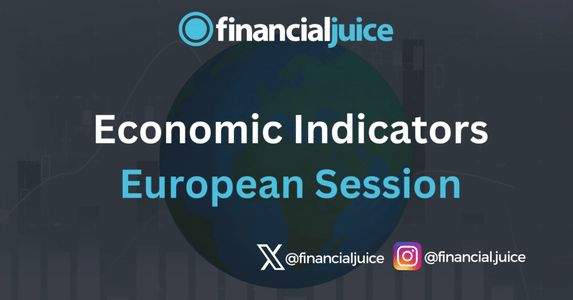
Week Ahead: Economic Indicators (EU)
Hey, Traders!
For the October 7th week, here is a list of all of the major economic indicators being released during the EU Session, with a brief synopsis of what they represent and what to possibly expect from the markets in reaction.
Monday 7th October
02:00 ET
German Industrial Orders
Manufacturers’ orders are a leading indicator for industrial production.
The figures are calculated every month by the Federal Statistical Office and represent the value of all orders for the delivery of self-made products confirmed by industrial enterprises with 50 or more employees in the respective reporting period.
The results are broken down by both sector and region of origin (domestic and foreign split into euro area and non-euro area). Monthly volatility can be very high, so moving averages give a much better guide to underlying trends.
What to expect:
A reading that is stronger than forecast is generally supportive (bullish) for the Euro, while a weaker than forecast reading is generally negative (bearish) for the Euro.
Tuesday 8th October
02:00 ET
German Industrial Production
Industrial production measures the physical output of the nation’s factories, mines and utilities. Data are collected from companies in the sector with fifty or more employees and include mining and quarrying, manufacturing, energy and, in contrast to its Eurozone counterpart, construction.
Investors want to keep their finger on the pulse of the economy because it usually dictates how various types of investments will perform. The stock market likes to see healthy economic growth because that translates to higher corporate profits. The bond market prefers more subdued growth that will not lead to inflationary pressures. By tracking economic data such as industrial production, investors will know what the economic backdrop is for these markets and their portfolios.
Like the manufacturing orders data, the production index has the advantage of being available in a timely manner giving a more current view of business activity. Those responding to the data collection survey account for about 80 percent of total industrial production. Like the PPI and the orders data, construction is excluded.
What to expect:
A higher than expected reading should be taken as positive/bullish for the EUR, while a lower than expected reading should be taken as negative/bearish for the EUR.
Friday 11th October
02:00 ET
UK GDP
Gross Domestic Product (GDP) measures the total value of a country’s industrial output over a given period. It consists of the aggregate domestic production of goods and services by individuals, businesses, and government.
GDP data is available in dollar or index form. U.K. GDP QoQ is the comparison of growth from one fiscal quarter to the next, represented in a percentage format.GDPQoQ is a leading indicator of U.K. economic health. High levels of GDP growth are viewed as being positive for U.K. indices as well as the GBP.
What to expect:
Low levels of growth are negative to most asset classes and are common to recessionary cycles. The Bank of England (BOE) places a great deal of emphasis on monthly and yearly GDP. Robust growth is often a prelude to monetary tightening, while stagnate levels provide an environment conducive to Quantitative Easing (QE).Traders monitor GDP (MoM) releases closely. Abnormal reports may cause rapid buying or selling of the U.K. indices or GBP. Currency, equities, and commodities markets all exhibit enhanced degrees of volatility surrounding the GDP release.
German HICP
The Harmonized Index of Consumer Prices is an index of consumer prices calculated and published by Destatis, on the basis of a statistical methodology that has been harmonized across all EU member states. HICP is a measure of prices used by the Governing Council of the EU to define and assess price stability in the euro area as a whole in quantitative terms.
What to expect:
By tracking inflation, whether high or low, rising or falling, investors can anticipate how different types of investments will perform. Over the long run, the bond market will rally (fall) when increases in the CPI are small (large). The equity market rallies with the bond market because low inflation promises low interest rates and is good for profits.
UK Manufacturing Production
Manufacturing Production measures the change in the total inflation-adjusted value of output produced by manufacturers. Manufacturing accounts for approximately 80% of overall Industrial Production.
Manufacturing output is the preferred number rather than industrial production which can be unduly influenced by electrical generation and weather. The manufacturing index is widely used as a short-term economic indicator in its own right by both the Bank of England and the UK government. Market analysts also focus on manufacturing and its sub-sectors to get insight on industry performance.
What to expect:
A higher than expected reading should be taken as positive/bullish for the GBP, while a lower than expected reading should be taken as negative/bearish for the GBP.



